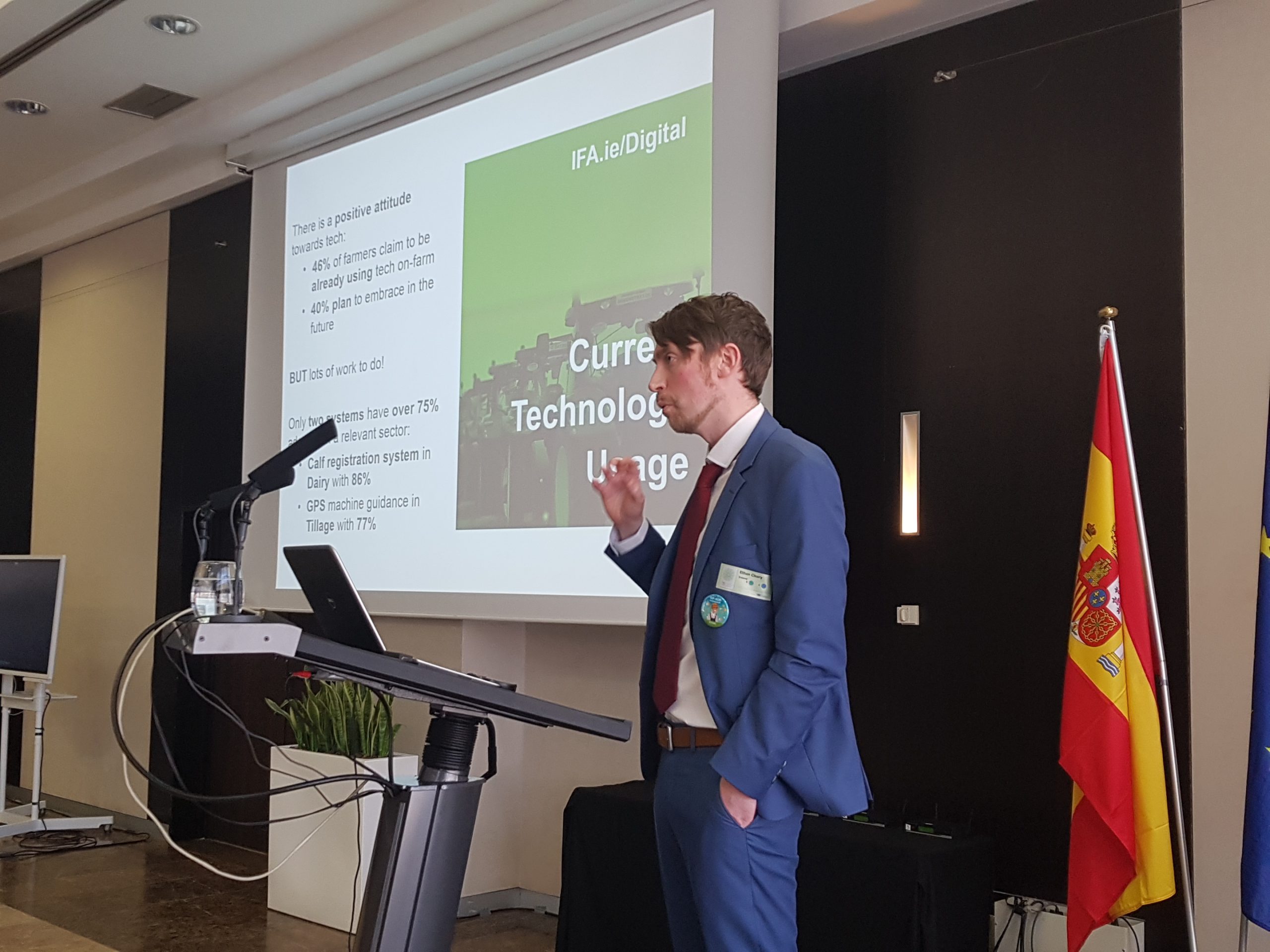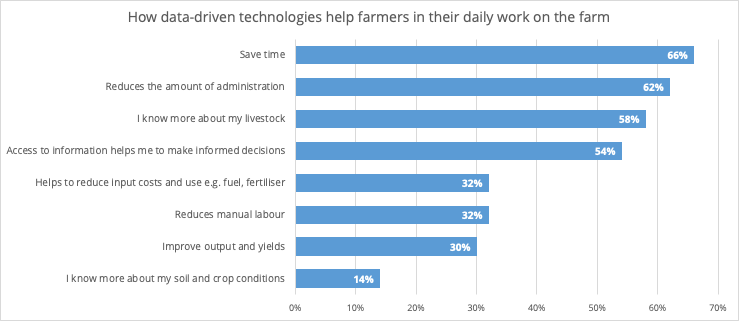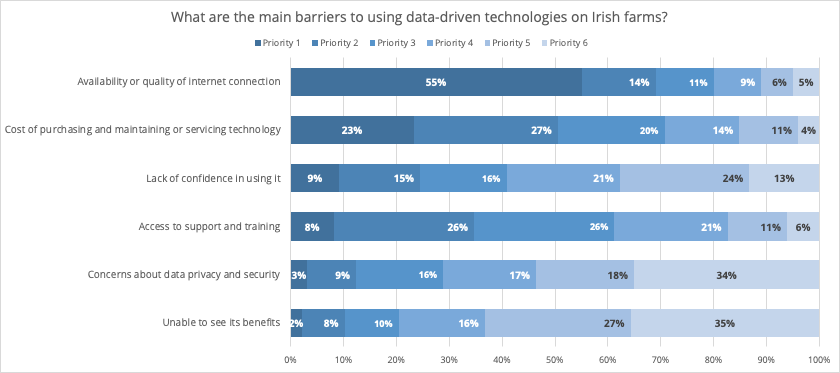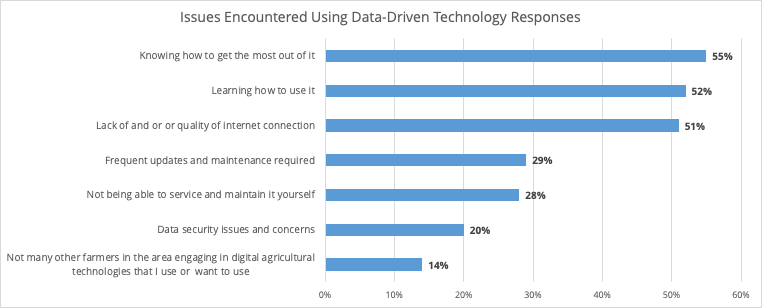
Ethan Cleary, Ag Tech Policy & Innovation Executive, The Irish Farmers’ Association.
Introduction
European agriculture is facing an increasingly challenging future, with significant market and regulatory pressures to develop more environmentally sustainable practices while increasing productivity. Data-driven technologies play a critical role in addressing these challenges. With farming data being more abundant now than it ever has, what are the factors influencing the adoption of data-driven technologies in agriculture?
Data-Driven Agriculture
The term ‘digital agriculture’ charts the application of digital technologies in agriculture: originally with the use of information technologies in managing basic farm records, through to the implementation of the Global Positioning System (GPS) protocol. This heralded the onset of the precision agricultural era with machine auto-guidance and localised site-specific control and monitoring, leading right up to the present day with the application of sensors, advanced networks and intelligent data management tools (European Agriculture Machinery Association, 2017).

Figure 1: The evolution of digital agricultural technologies from the first Geographic Information Systems (GIS) built in research labs to modern day ‘smart farming’ using sensors, software and data. Source (Brase, 2006).
Modern digital agriculture, also referred to as ‘Smart Farming’, makes use of cutting edge technologies such as artificial intelligence (AI), Big Data and data analytics, mobile devices, software and the internet of things (IoT) to further boost the productivity gains delivered by adoption of precision farming by farmers (Villa-Henriksen, et al., 2020; Kamilaris & Prenafeta-Boldú, 2018; Wolfert, et al., 2017; OECD, 2018)
Underpinning and linking the use of these technologies is a massive increase in data generated on farms which is expected to reach four million daily data points by 2034 (Business Insider Intelligence, 2015). However, to maximise the benefit of digital technologies on the farm, this data needs to be organised and understood so that useful and valid insights are possible using the appropriate data analytics tools (Russo, et al., 2015). The Global Innovation Index highlights ‘analytics and management’ gaps as one of the key issues inhibiting the adoption of digital agriculture (2017).
Farmer’s Adoption of Data-Driven Agriculture: An Irish Study
From a research study that we in the IFA carried out last year we found that the primary driver for adoption was linked to the expectation of attaining better performance and boosting productivity through, for example, saving time, reducing administration, developing better outputs and yields and the more effective use of agricultural inputs.

The biggest barriers faced are the lack of sufficient high-quality broadband and internet connectivity in general, and the perceived cost of purchasing and maintaining data-driven technologies which can be overcome through communicating clearly the return on investment (ROI) possible through the use of data-driven technologies


Improving Adoption and Continued Use
Farming is a set of interlinked, complex activities, with the data-driven technologies and standards currently used in the sector fragmented and siloed across a range of industry incumbents, new startups and centrally managed portals administered by national governments.
This leads to the perception that high fixed cost investments are required for data-driven applications when some of the primary data-driven use cases agriculture are more suited towards software solutions and should be available in modern, sophisticated Farm Management Information Systems (FMISs). Farmers require these FMISs to cater for the abundance of services, third-party integrations and machines involved in contemporary agriculture. Data processing should be automated as much as possible and should surface analytics and insights that are timely and will help the farmer end-user improve the farm’s performance through a clear, simple and elegant user experience (Kaloxylos, et al., 2012).
Projects such as DEMETER are addressing these issues involving data standards and interoperability, complex data processing and the need for farmer-specific user experiences. Farmers currently need to combine a myriad of different data sources and information in conjunction with the wisdom, tradition, practices and customs relevant to their farm in order to aid their decision-making process. DEMETER uses a human-in-the-loop model that constantly focuses on mixing human knowledge and expertise with digital information to develop the locally appropriate solutions that are increasingly required to boost on-farm productivity.
One of the central objectives of the DEMETER project is to empower farmers and farmer cooperatives so they can use their existing platforms and machinery to extract new knowledge to improve their decision making. This is done in tandem with easing the acquisition, evolution and updating of these systems, machinery and sensors by focusing their investment and time where these are really needed: producing more, better quality, food, feed and fibre, while lessening environmental impact and, most importantly for the farmer, generating a sustainable income.


